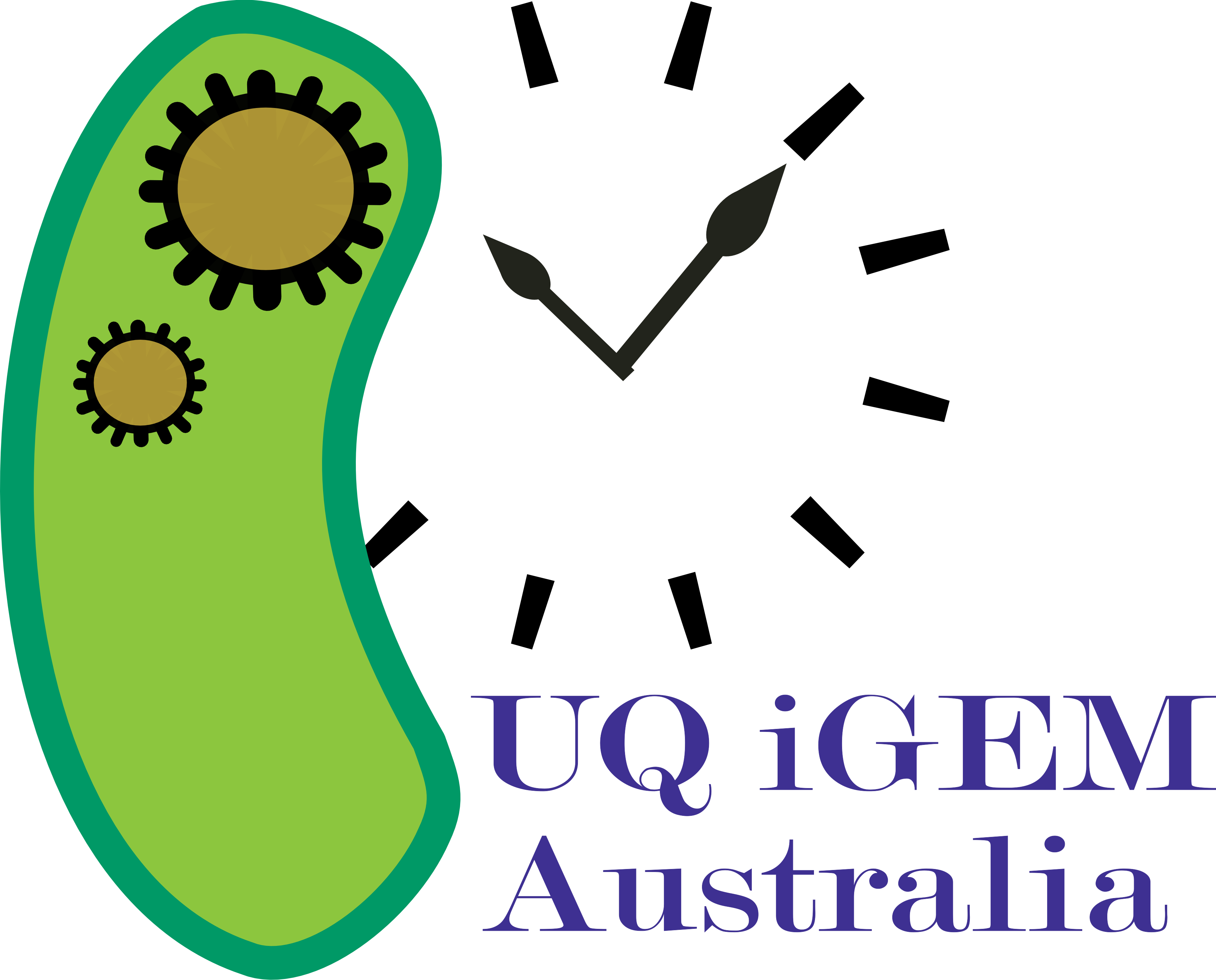Team:UQ-Australia/Modeling
From 2011.igem.org
(→Microscopy) |
(→Kinetics) |
||
| (4 intermediate revisions not shown) | |||
| Line 1: | Line 1: | ||
{{:Team:UQ-Australia/Template:Header}} | {{:Team:UQ-Australia/Template:Header}} | ||
| - | {| | + | {|style="width:100%;" border="0" cellpadding="10" cellspacing="0" |
| + | |-valign="top" | ||
|At the completion of the experimental work, we should expect a working clock BioBrick, which should exhibit oscillatory behaviour. We wish to characterise how our clock BioBrick oscillates. | |At the completion of the experimental work, we should expect a working clock BioBrick, which should exhibit oscillatory behaviour. We wish to characterise how our clock BioBrick oscillates. | ||
Of interest is the frequency and regularity at which it oscillates and whether multiple cells containing our BioBrick oscillate in time with each other. | Of interest is the frequency and regularity at which it oscillates and whether multiple cells containing our BioBrick oscillate in time with each other. | ||
| Line 14: | Line 15: | ||
== <span style="color:#558822">Kinetics</span> == | == <span style="color:#558822">Kinetics</span> == | ||
| - | |||
| - | |||
{|style="width:100%;" border="0" cellpadding="10" cellspacing="0" | {|style="width:100%;" border="0" cellpadding="10" cellspacing="0" | ||
|width="125" |[[File:Synchronisation viewpdf UQ.png|125x125px|link=https://static.igem.org/mediawiki/2011/f/f4/UQ-Auatralia-Modelling.pdf]] | |width="125" |[[File:Synchronisation viewpdf UQ.png|125x125px|link=https://static.igem.org/mediawiki/2011/f/f4/UQ-Auatralia-Modelling.pdf]] | ||
| - | | A mathematical investigation into the behaviour of a genetic circuit can give predictions into the behaviour the circuit. Each reaction within a genetic circuit can be modelled as a first order kinetic law. Here we analyse the proposed circuit replicating the behaviour of a biological clock for the UQ-Australia iGEM 2011 entry. Open-source software [http://www.celldesigner.org CellDesigner] was used to perform the simulation of the kinetic laws over time. Although it was expected that there would be some oscillation behaviour, our simulations have shown that there would be no oscillations | + | | A mathematical investigation into the behaviour of a genetic circuit can give predictions into the behaviour the circuit. Each reaction within a genetic circuit can be modelled as a first order kinetic law. Here we analyse the proposed circuit replicating the behaviour of a biological clock for the UQ-Australia iGEM 2011 entry. Open-source software [http://www.celldesigner.org CellDesigner] was used to perform the simulation of the kinetic laws over time. Although it was expected that there would be some oscillation behaviour, our simulations have shown that there would be no oscillations. However, if the physical genetic circuit did display oscillatory behaviour, then literature values taken would then need to be revised for the model. |
| - | + | ||
[https://static.igem.org/mediawiki/2011/f/f4/UQ-Auatralia-Modelling.pdf '''Modelling of kinetics for circuit'''] | [https://static.igem.org/mediawiki/2011/f/f4/UQ-Auatralia-Modelling.pdf '''Modelling of kinetics for circuit'''] | ||
| - | [https:// | + | [https://static.igem.org/mediawiki/2011/2/2d/UQ-Australia-circuit.zip '''Download our CellDesigner file to play with our circuit!'''] |
| + | |||
| + | [http://www.celldesigner.org/ Here is the CellDesigner webpage] | ||
|} | |} | ||
Latest revision as of 01:26, 6 October 2011
 "
"







